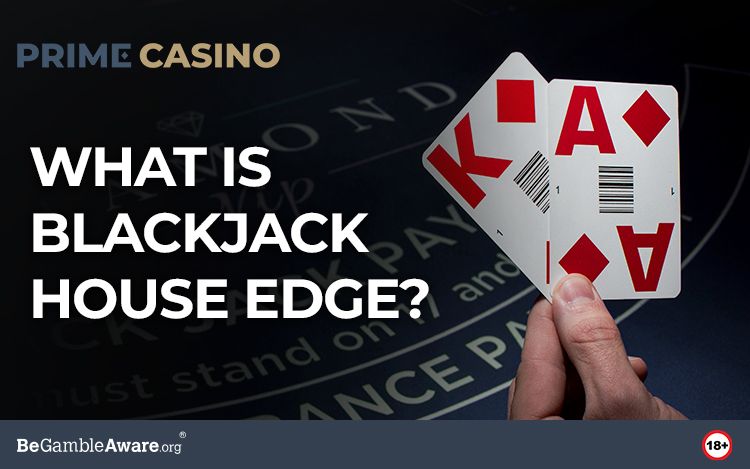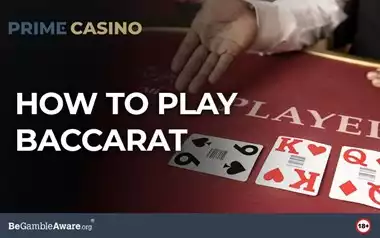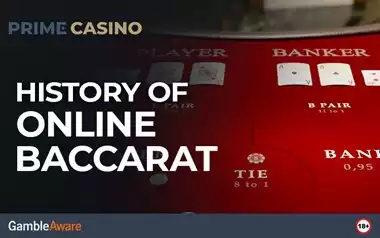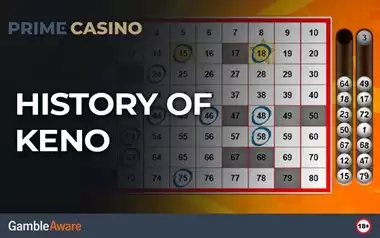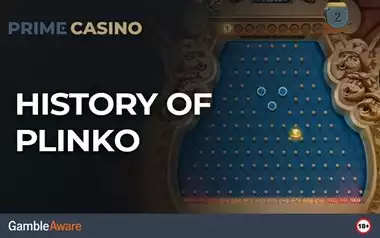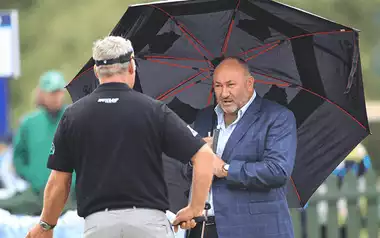What is House Edge?
The house edge is the percentage that a casino is expected to win over an extended period of time in a given game. This is how brick-and-mortar and online casinos earn their share, giving rise to the phrase "the house always wins." Over time, the house edge accrues. In blackjack, the average house edge is around 2%, although this value can vary slightly between different variants.
To put it simply, if a game has a house edge of 2%, then statistically, for every £100 you wager, you would expect to receive £98 back (known as the return to player, or 'RTP'), and the house or live casino would gain £2 through their house edge. It is important to remember that this percentage represents long-term play, meaning there is potential for erratic short-term fluctuations. These fluctuations often provide opportunities for lucky players to win big in games such as roulette or slots.
How Does House Edge Work in Blackjack?
Unlike more volatile games such as slots and roulette, Blackjack features a skill-based element which can impact the overall house edge. It is important to emphasise that it is impossible for a player to beat the optimal house edge displayed in the math model of the game (no matter what any strategy says), the house edge can fluctuate depending on the decisions the player makes.
Rookie errors, such as choosing to double down in an inopportune moment, push the house edge to the casinos’ favour, whereas an experienced player, who knows the pitfalls to avoid, can push the house edge to their favour (as much as the optimal percentages allow, of course). When playing blackjack, make sure you always read the regulations. When playing blackjack, if you have the option to select a game that pays 6:5 or 3:2, go with the former.
Blackjack odds and edges can subtly shift and change depending on the variables of play.
- The dealer has the advantage as they act last and the player acts first. So if a player busts, they automatically lose the round first, even if the dealer busts too.
- In blackjack, the player has the advantage when the dealer receives even money on blackjack and the player receives 3:2.
- The edge belongs to the player when the dealer must hit on 16 and stand on 17, and the player chooses when to hit, stand, double, split, or take insurance; where applicable.
- The edge belongs to the player when they are able to divide pairs (a ‘split’) while the dealer is unable to do so.
- The player has the advantage when they are permitted to double down while the dealer is not; so long as this feature is correctly utilised.
- The dealer has the edge as the player must place money on the table (physical or digital), while the dealer only needs to payout when the player achieves a winning hand.
To surmise, the biggest factor for the player is that the dealer must follow set rules (hit on 16, stand on 17), and does not have additional betting options such as splitting and double down. The biggest factor against the player is the dealer's face-down hole card, but most importantly, the fact that players must play first.
How to Play Blackjack?
The aim of blackjack is simple; have the higher value hand without going bust (over 21). The points assigned to cards represent their face value; a 2 of hearts is worth 2 points, a 7 of diamonds is worth 7 points, and so on. All royal cards (J, Q, K) are worth 10 points. The main rule that beginners need to be aware of is the role of the ace.
The ace can be worth 10 or 1. When it appears in a hand at a 10-value, the hand is known as a ‘soft’ hand. However, should the player hit, and with the ace valued at 10, would go bust, the ace throws a lifeline and changes its value to 1. The hand (and all other hands without an ace valued at 10) then becomes a ‘hard’ hand, as it cannot change its value any longer.
The overall gameplay cycle for blackjack is as follows:
- The player makes their wager.
- The dealer deals a card to each player who is currently in play in addition to themselves. All cards are handed face-up to the players, with the exception of the dealer, who is dealt face-down (the hole card).
- Next, the dealer hands two cards to each player who is currently in play. These will all be face up, including the dealers.
- Play always starts with the player to the left of the dealer while playing blackjack in person, and it goes clockwise around the table.
- When it is your turn to play, you will have to decide whether to hit, stand, double down, or split (if appropriate).
- The player(s) always play first. If you're playing online, you can use strategy manuals or blackjack help tables to help you make decisions; but this is entirely optional.
- After your turn is over (you can either choose to stand or go bust), the next player will play. The dealer takes a turn after each player has had a turn.
- The dealer will reveal their whole card. If the total is 16 or less, the dealer will automatically hit; if it is 17 or more, they will automatically stand.
- If the dealer busts, all players with active hands will win. If the dealer strikes a blackjack, then all of the players lose. If the dealer stands, any player whose hand is worth more than the dealer's will be paid out.
- Once all the payouts have been awarded, the next blackjack round can begin.
How Does Blackjack’s House Edge Vary From Other Casino Games?
| Casino Game Type | House edge | Theoretical RTP |
|---|---|---|
| Blackjack | 0.5-2% | 98-99.5% |
| American roulette | 5.26% | 94.74% |
| European Roulette | 2.7% | 97.3% |
| French Roulette | 1.35% | 98.65% |
| Baccarat | 1.01-15.75% | 84.25-98.89% |
| Slots | 2-15% | 85-98% |
| Caribbean Stud Poker | 5.22% | 94.78% |
| Hold'em Poker | 2.36% | 97.64% |
| Sic Bo | 2.78-33.33% | 66.67-97.22% |
As you can see, the reason why casinos host blackjack games is because its favourable RTP and lower house edge make it appealing to players and blackjack's simple and accessible gameplay can draw in all types of players. As with everything, it is all about balance.
Where Blackjack, Baccarat, and French Roulette offer lower house-edge statistics, games such as slots, Caribbean Stud Poker and American Roulette offer larger house-edge percentages. This means that just like how the overall house edge is defined over the long term, the overall balance of the houses’ returns is balanced by the range of games offered.
Is it Possible to Lower the House Edge in Blackjack?
By playing optimally, you can reduce the house edge of blackjack to its most favorable percentage. However, it must be emphasized that it is impossible to reduce the house edge beyond its lowest stated number. Strategies promising ‘sure-fire’ wins are fraudulent, and any strategy should only be used to manage your bankroll or add a new twist to your gameplay. Not to mention, there will always be the element of luck in this game and is a big deciding factor.
The same can be said for blackjack help tables. Many online players find these tools handy, as they indicate the statistically optimal choice for the player in various situations. However, the information in these charts represents only the optimal choice based on mathematical averages and cannot account for random chance.
When selecting your blackjack game, you can mitigate some of the house edge by choosing the game with the most favorable RTP statistics. This is far easier when playing online or live blackjack. A good rule of thumb in a real-world casino is to check how many decks the game uses (more decks equal a higher house edge) and the payout for a ‘natural’ blackjack.
Understanding the basics of blackjack, such as the ‘soft 17’ rule, is essential. Knowing whether your online casino requires the dealer to hit or stand on a soft 17 can significantly increase your chances of success and inform your decision on when to stand.
Blackjack and Its House Edge: Final Thoughts
Loved by casinos, and loathed by players, the house edge is a vital factor of all casino games. While blackjack certainly offers one of the most competitive and favourable house edge percentages (0.5-2%) when compared with other popular casino games, there is no legitimate way to improve upon the statistics presented by your chosen casino.
Remember that the RTP and house edge percentages represent play over the long term, and do not account for random or erratic outcomes seen in short-term play. In general, the best thing you can do to ensure you have the best possible odds is to pick the right game, understand the rules, and make optimal game decisions.
One of the best overall rules that you can apply to all casino games is to gamble responsibly. Be sure to set yourself a time limit and budget for your overall session and stick to it. Do not take impulsive or excessive risks, chase losses, and most importantly, when the fun stops; stop.
